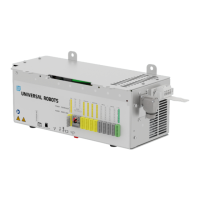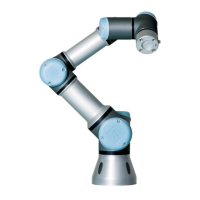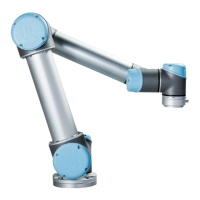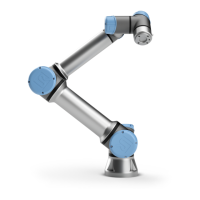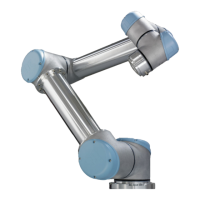8.6.2. I/O Setup
Description Use the I/O Setup screen to define I/O signals and configure actions with the I/O tab
control. The types of I/O signals are listed under Input and Output.
You can use a fieldbus, for example, Profinet and EtherNet/IP, to access the general
purpose registers.
If you enable the Tool Communication Interface (TCI), the tool analog input becomes
unavailable.
NOTICE
When starting programs from an I/O or fieldbus input, the robot can
begin movement from the position it has, there will not be any manual
movement to the first waypoint via PolyScope required.
I/O Signal
Type
To limit the number of signals listed under Input and Output, use the View drop-down menu
to change the displayed content based on signal type.
Assigning
User-defined
Names
You can name the Input and Output signals to easily identify the ones being used.
1. Select the desired signal.
2. Tap the text field to type a name for the signal.
3. To reset the name to default, tap Clear.
You must provide a user-defined name for a general purpose register to make it available in
the program (i.e., for a Wait command or the conditional expression of an If command).
The Wait and If commands are described in (Wait) and (If), respectively. You can find
named general purpose registers in the Input or Output selector on the Expression Editor
screen.
UR30 83 User Manual
Copyright © 2009–2024 by UniversalRobotsA/S. All rights reserved.
